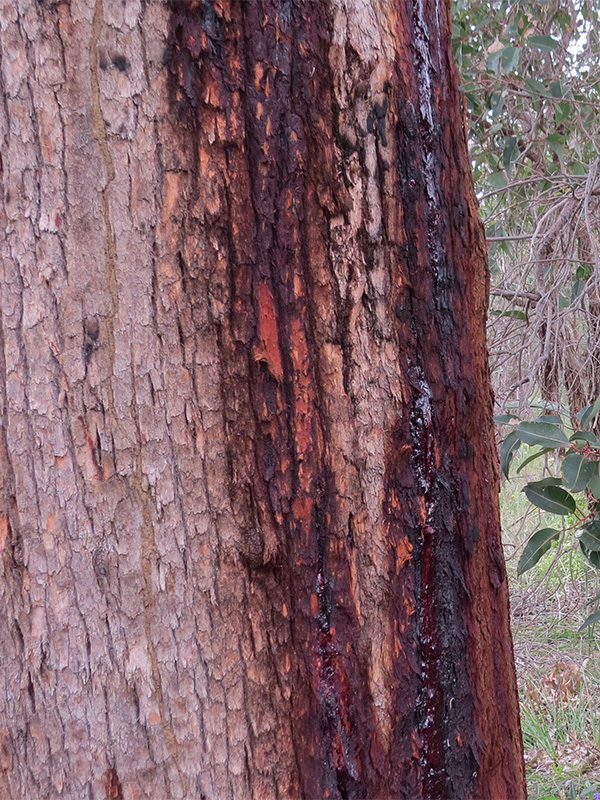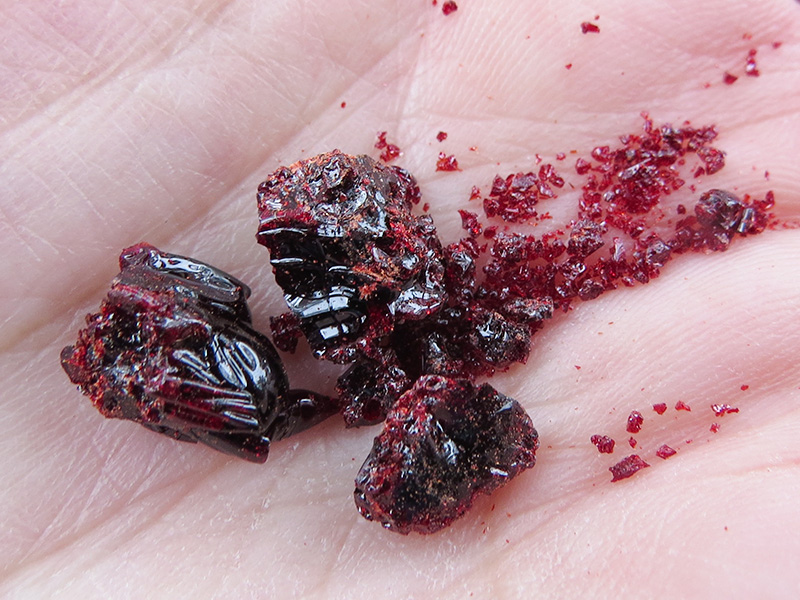| Propagation | Seed. |
| Cultivation | Full sun and partial-shade. Well-drained soils. Prefers clay loams, sandy clay, gravel and sandy soils. |
| Notable Specimens | Kings Park and Botanical Garden, Perth, Australia. |
| Habitat | Coastal plains. |
| Bark/Stem Description | The bark has numerous faults and gum veins. |
| Flower/Leaf Bud Description | Clavate and 7 - 14 mm long and 7 - 10 mm wide with a calyptrate calyx. |
| Leaf Description | Adult leaves are disjunct. thick and concolorous with broad lanceolate to ovate shape. Basally tapered rounded. Leaf blade is 9 - 14 cm long and 25 - 40 cm wide. Leaf petioles are narrowly flattened or channelled. |
| Flower Description | Terminal compound conflorescences have 3 - 7 umbellasters on terete or angular peduncles.
|
| Fruit Description | Ovoid to urceolate in shape, pedicellate and 30 - 50 mm long and 25 - 40 mm wide. Large nuts that carry seeds. |
| Colour Description | The bark is greyish-brown to reddish-brown in colour. The flowers are pinkish-white in colour. |
| Texture Description | Rough and tesselated bark. The leaves are glossy in texture. |

